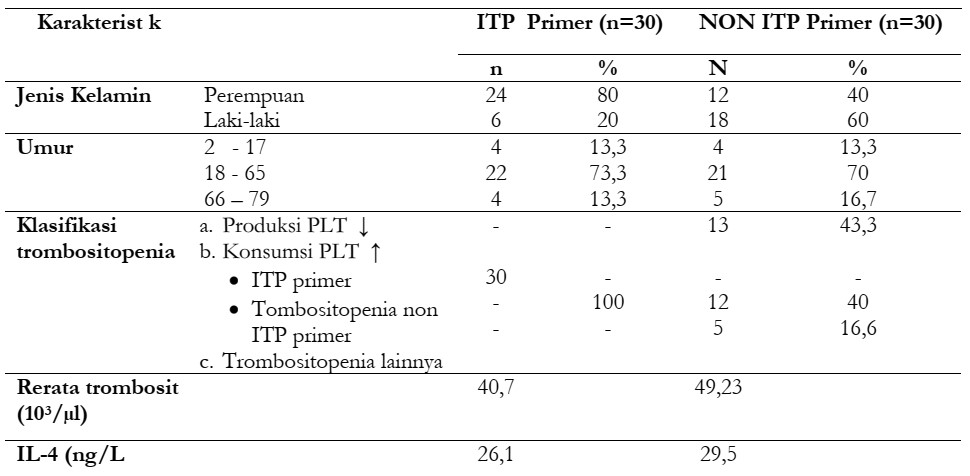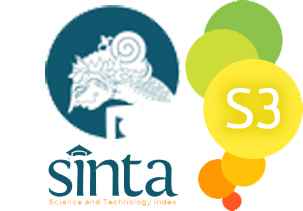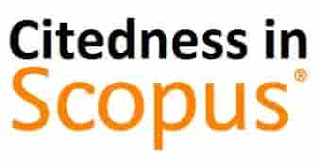Analysis of Interleukin-4 in Thrombocytopenia Autoimmune Patients
Abstract
Thrombocytopenia is a disease characterized by a decreased platelet count. Some of the causes are decreased platelet production, increased platelet use, such as due to infection, and autoimmune causes, namely the loss of tolerance of the immune system to self-antigens on the surface of the platelets and megakaryocytes marked with a platelet count <100,000 / μL and based on the pathomechanism classified as primary Immune Thrombocytopenia (ITP) and secondary, as well as several other causes. IL-4, one of the cytokines produced by Th2 which stimulates B cells to increase antibody production. The aim of this study was to compare IL-4 levels in primary ITP patients and non-primary ITP tombocytopenia. This study involved 30 primary ITP subjects and 30 non-ITP primary tombocytopenia subjects obtained based on data medical records, examination of IL-4 cytokine levels by the ELISA method. The results of this study that the IL-4 levels of the primary non ITP tombocytopenia subject group were higher than the primary ITP subject group, which means that there were differences in IL-4 levels in the primary ITP subject group and the non-ITP primary tombocytopenia subject group.
References
Andrès, E. (2016). What Impact for Sex Difference on Immune Thrombocytopenic Purpura? Women’s Health - Open Journal, 2(1), e1–e3. https://doi.org/10.17140/WHOJ-2-e004
Cines, D. B., Liebman, H., & Stasi, R. (2009). Pathobiology of secondary immune thrombocytopenia. Seminars in Hematology, 46(1 Suppl 2), S2-14. https://doi.org/10.1053/j.seminhematol.2008.12.005
Hong-Xia Zhang, Guang-Sheng Wu*, W.-L. G. (2016). Changes and significances of Th1/Th2, related cytokines and T cell subgroup in aplastic anemia patients. Journal of Hainan Medical University, 22(10), 96–98. Retrieved from http://www.hnykdxxb.com/PDF/201610/25.pdf
Kistangari, G., & McCrae, K. R. (2013). Immune Thrombocytopenia. Hematology/Oncology Clinics of North America, 27(3), 495–520. https://doi.org/10.1016/j.hoc.2013.03.001
Ma, L., Liang, Y., Fang, M., Guan, Y., Si, Y., Jiang, F., & Wang, F. (2014). The cytokines (IFN-gamma, IL-2, IL-4, IL-10, IL-17) and Treg cytokine (TGF-beta1) levels in adults with immune thrombocytopenia. Die Pharmazie, 69(9), 694–697. Retrieved from http://www.ncbi.nlm.nih.gov/pubmed/25272942
Makhlouf, M. M., & Elhamid, S. M. A. (2014). Expression of IL4 (VNTR intron 3) and IL10 (-627) Genes Polymorphisms in Childhood Immune Thrombocytopenic Purpura. Laboratory Medicine, 45(3), 211–219. https://doi.org/10.1309/LMB0QC5T1RXTTRZQ
Matzdorff, A., Meyer, O., Ostermann, H., Kiefel, V., Eberl, W., Kühne, T., … Rummel, M. (2018). Immune Thrombocytopenia - Current Diagnostics and Therapy: Recommendations of a Joint Working Group of DGHO, ÖGHO, SGH, GPOH, and DGTI. Oncology Research and Treatment, 41(5), 1–30. https://doi.org/10.1159/000492187
Moulis, G., Palmaro, A., Montastruc, J.-L., Godeau, B., Lapeyre-Mestre, M., & Sailler, L. (2014). Epidemiology of incident immune thrombocytopenia: a nationwide population-based study in France. Blood, 124(22), 3308–3315. https://doi.org/10.1182/blood-2014-05-578336
National Organitation for Rare Disorder. 2015. NORD gratefully acknowledges the Platelet Disorder Support Association and PDSA Medical Advisior Douglas Cines, MD, for assistance in the preparation of this report
Pavelić, J. (2013). Immune thrombocytopenia: serum cytokine levels in children and adults. Medical Science Monitor, 19, 797–801. https://doi.org/10.12659/MSM.884017
Saeidi, S., Jaseb, K., Asnafi, A. A., Rahim, F., Pourmotahari, F., Mardaniyan, S., … Saki, N. (2014). Immune Thrombocytopenic Purpura in Children and Adults: A Comparative Retrospective Study in IRAN. International Journal of Hematology-Oncology and Stem Cell Research, 8(3), 30–36. Retrieved from http://www.ncbi.nlm.nih.gov/pubmed/25642306
Sari Teny Tjitra. (2018). Immune thrombocytopenic purpura. Sari Pediatri, 20. Retrieved from file:///C:/Users/ACER-PC/Downloads/1355-3864-5-PB (16).pdf
Schulte, W., Bernhagen, J., & Bucala, R. (2013). Cytokines in Sepsis: Potent Immunoregulators and Potential Therapeutic Targets—An Updated View. Mediators of Inflammation, 2013, 1–16. https://doi.org/10.1155/2013/165974
Takahashi, N., Saitoh, T., Gotoh, N., Nitta, Y., Alkebsi, L., Kasamatsu, T., … Murakami, H. (2017). The cytokine polymorphisms affecting Th1/Th2 increase the susceptibility to, and severity of, chronic ITP. BMC Immunology, 18(1), 26. https://doi.org/10.1186/s12865-017-0210-3
Wu, Z., Qin, W., Zeng, J., Huang, C., Lu, Y., & Li, S. (2015). Association Between IL-4 Polymorphisms and Risk of Liver Disease. Medicine, 94(35), e1435. https://doi.org/10.1097/MD.0000000000001435
Zainal, A., Salama, A., & Alweis, R. (2019). Immune thrombocytopenic purpura. Journal of Community Hospital Internal Medicine Perspectives, 9(1), 59–61. https://doi.org/10.1080/20009666.2019.1565884
Zufferey, A., Kapur, R., & Semple, J. (2017). Pathogenesis and Therapeutic Mechanisms in Immune Thrombocytopenia (ITP). Journal of Clinical Medicine, 6(2), 16. https://doi.org/10.3390/jcm6020016























